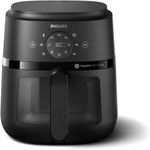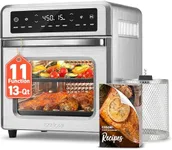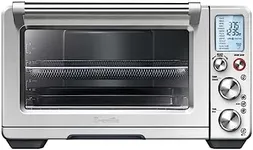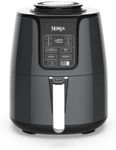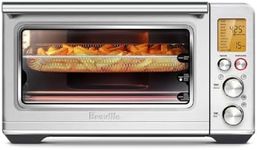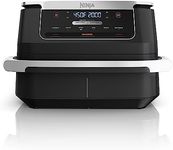Buying Guide for the Best Non Toxic Air Fryer
Choosing a non-toxic air fryer is a smart move if you want to enjoy healthier cooking without worrying about harmful chemicals leaching into your food. The main goal is to find an air fryer made from safe materials, with reliable performance, and features that match your cooking habits. Understanding the key specifications will help you make a choice that fits your kitchen and lifestyle, ensuring you get the most out of your purchase.Material SafetyMaterial safety refers to the types of materials used in the construction of the air fryer, especially the parts that come into direct contact with your food. This is important because some materials, like certain plastics or non-stick coatings, can release harmful chemicals when heated. When comparing air fryers, look for those labeled as BPA-free, PFOA-free, and free from other toxic substances. Stainless steel baskets and ceramic coatings are generally considered safer options. If you are particularly sensitive or want to avoid all risks, prioritize models with stainless steel or ceramic interiors, and always check for clear safety certifications.
Coating TypeThe coating type is the material used on the cooking basket or tray to prevent food from sticking. This is important because some non-stick coatings, like Teflon, can degrade at high temperatures and release fumes. There are three main segments: traditional non-stick (often PTFE-based), ceramic-coated, and uncoated stainless steel. Traditional non-stick is easy to clean but may not be the best for those concerned about toxins. Ceramic coatings are a safer alternative, offering non-stick properties without harmful chemicals. Uncoated stainless steel is the safest but may require more oil and effort to prevent sticking. Choose based on your comfort with cleaning and your desire to avoid chemicals.
CapacityCapacity refers to how much food the air fryer can hold at one time, usually measured in liters or quarts. This matters because it affects how much you can cook in a single batch. Small air fryers (under 3 quarts) are good for individuals or couples, medium sizes (3-5 quarts) suit small families, and large models (over 5 quarts) are best for bigger households or those who like to cook in bulk. Think about how many people you usually cook for and what types of meals you want to prepare to pick the right size.
Temperature RangeThe temperature range is the span of heat settings the air fryer can achieve. This is important because different foods require different cooking temperatures for the best results. Most air fryers offer a range from about 180°F to 400°F. Lower ranges are good for dehydrating or gentle cooking, while higher ranges are needed for crisping and browning. If you want versatility, look for a model with a wide temperature range. Consider what types of foods you plan to cook most often to decide what range is best for you.
Ease of CleaningEase of cleaning refers to how simple it is to wash the air fryer after use. This is important because leftover food and oil can build up, affecting taste and hygiene. Some air fryers have dishwasher-safe baskets and trays, while others require hand washing. Stainless steel and ceramic surfaces are generally easier to clean and less likely to retain odors. If you want minimal effort, look for models with removable, dishwasher-safe parts and simple designs without too many crevices.
